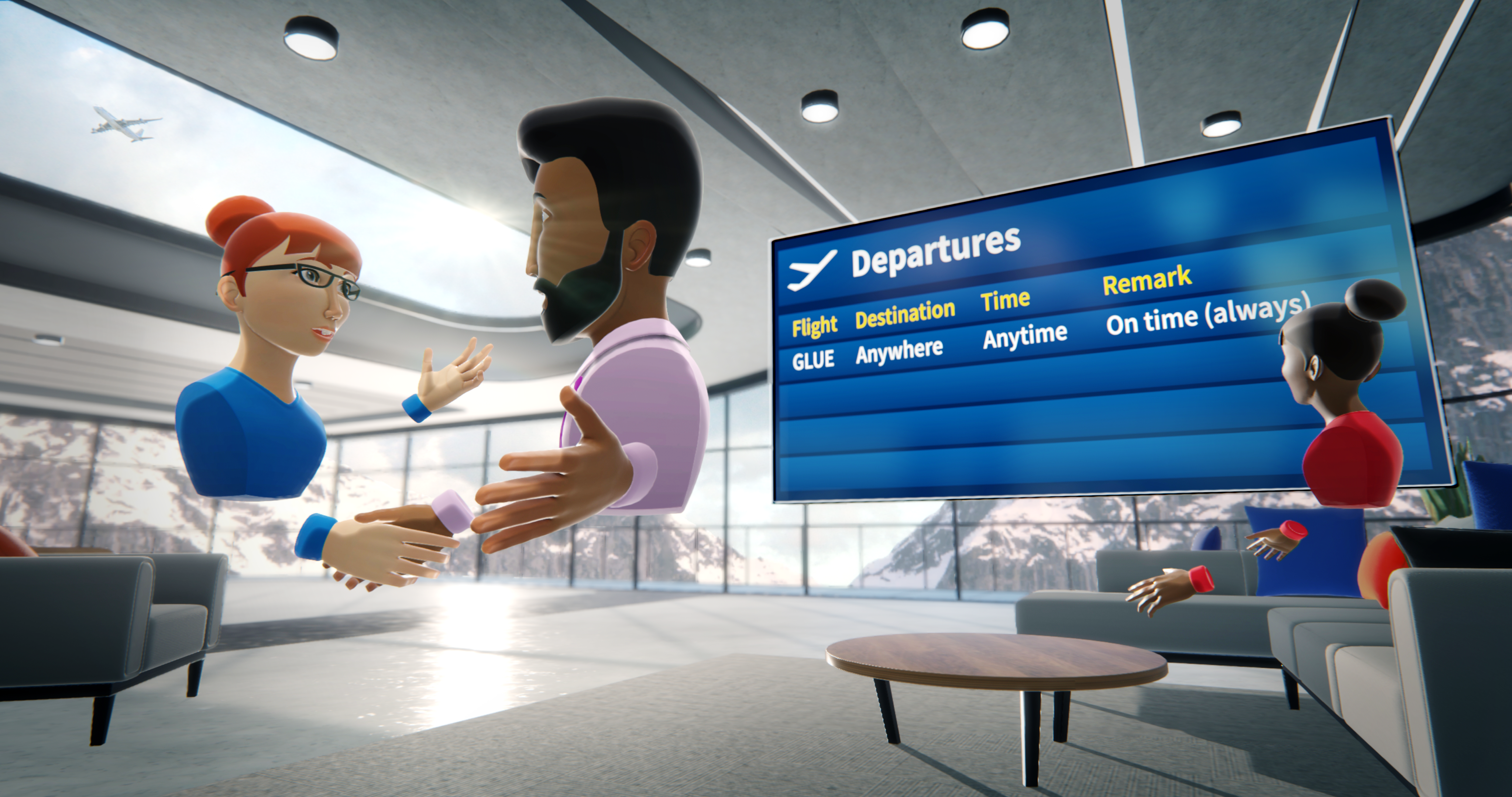The tradition of doing business in person – a customer visit, a workshop or closing a deal – is a burden not just to jet-lagged business travellers but to the environment and the company credit card.
Yet, it’s one that’s alive and well. In fact, it’s doing better than ever. The numbers are staggering – in the United States alone there are up to 488 million business trips annually. That’s 1.3 million a day.
On average an American business traveller makes eight business trips annually, at a cost of roughly $12 000.
Which brings us to Glue. Now, we’d be mistaken to suggest that remote meetings in Glue could completely replace all those physical in-person meetings. We know some may be unavoidable. But we reckon we could make a big dent in the total.
Let’s run some simple numbers. Working on the basis that an average business trip costs $1 500 and a monthly Glue license per employee is $50, we can easily calculate the direct savings.
By replacing just two trips or four flights with Glue, a company can directly save $2 400 per employee annually. And that’s without the gains both in efficiency and employee wellbeing when he or she no longer needs to spend hours at airports.
And remember, the flight itself is only part of the journey. According to research by Fly Aeolus (1), the most tiring aspect of business flying is not the flight itself (10% agree), but the ride to and from the airport (22%) and unnecessary time spent waiting (27%) to board the airplane. We can all relate.
If that’s not enough, there’s then the small matter of the climate emergency. Flying accounts for about 2% of CO2 emissions generated by human activity, according to The International Air Transport Association, and that share may grow further in the coming years.(2)
Business travel is responsible for a sizeable chunk of this and some companies support contributions to emission reduction or ‘offsetting’ initiatives. However, the onus is on people and businesses to simply fly less if we are to avert climate catastrophe (3), with workers taking advantage of new virtual collaboration tools rather than being subjected to ‘flying shame’.
The motivators to use virtual collaboration are piling up as we go – from cost savings,employee wellbeing to the environment preservation.
Just one example of the potential: last year, Finland’s largest company increased virtual meetings by 14% year-over-year, which helped to reduce its travel emissions by 16%.(4)
In short, there are plenty of reasons to make the change from corporate globetrotter to virtual collaborator.
The question is then: how good do you want your virtual collaboration to be? We at Glue are working tirelessly to fulfil the promise of a better future. Our mission is to help people and teams around the world collaborate in more human, productive and sustainable ways.
Contact us at sales@glue.work to experience the future of collaboration.
Sources:
1. Ghijs, S. (2017) The Business Flight Travel Survey Statistics, Corporate traveller calls for a total travel experience.
2. Fly Aeolus. Available: https://flyaeolus.com/blog/2017-business-travel-statistics/ 2. IATA. 2018. Fact Sheet Climate Change & CORSIA. Available: https://www.iata.org/pressroom/facts_figures/fact_sheets/Documents/fact-sheet-climate-change.pdf
3. Lahti, V-M. 2019. Sitra. The aviation industry has big intentions for offsetting greenhouse gas emissions. Available: https://www.sitra.fi/en/articles/aviation-industry-big-intentions-offsetting-greenhouse-gas-emissions/
4. Nokia. 2018. Planet & People Report 2018. Available: https://www.nokia.com/sites/default/files/2019 – 05/Nokia_People_and_Planet_Report_2018.pdf


